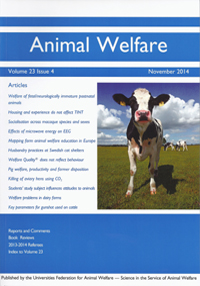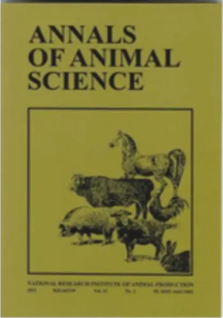Document type: online pre-publication of scientific article in Animal Welfare
Authors: C.J. Byrd, J.S. Radcliffe, B.A. Craig, S.D. Eicher, D.C. Lay
Preview: The purpose of this study was to evaluate whether linear and non-linear measures of heart rate variability (HRV) could be used as indicators of piglet castration pain. Thirty piglets were allocated to 1 of 4 treatments: i) sham castrated HRV (SHRV; n = 8); ii) surgical castrated HRV (CHRV; n = 7); iii) sham castrated blood collection (SBC; n = 7); or iv) surgical castrated blood collection (CBC; n = 8). Piglets in the SHRV and CHRV treatment groups underwent a 1-h HRV and postural behaviour evaluation on day -1, day 0 (castration treatment), day 1 and day 3 of the experimental procedure. Piglets in the SBC and CBC groups underwent blood collection for serum cortisol analysis at -0.5, 1, 2, 3, 24, 48 and 72 h relative to castration treatment. Castrated piglets (CHRV) exhibited greater low to high frequency ratio, lower sample entropy and greater percent determinism compared to SHRV piglets, indicating greater pain-related stress due to the surgical castration procedure. Serum cortisol was greater in CBC pigs at 1 h post-castration compared to SBC piglets. No effect of treatment was found for amount of time spent lying post-castration. In conclusion, surgically castrated pigs exhibited greater pain-related stress than their sham castrated counterparts. Additionally, non-linear HRV measures seem to complement traditional linear HRV measures and may be valuable for assessing pain-related stress in future studies investigating swine welfare.





